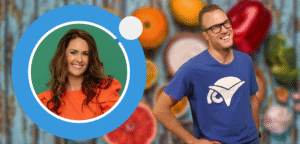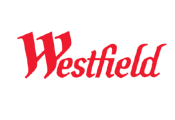How do you go from being a small business to a big company and a well-known brand? Maybe you’re sitting in your garage or your parents’ basement and you’re trying to see how you can grow your business. Our special guest, Jason Daniel, shared how he has grown from a self-funded startup to a team of 12 in 2018 to a company with over 100 employees today.
Jason Daniel is the founder and CEO of LSKD, an Australian lifestyle apparel company. He has 10+ years of experience in the action sports and lifestyle fashion industry and won the 2021 Gold Coast Young Entrepreneur of the Year Award. Always hungry to learn and grow, he is highly proficient and skilled in all aspects of business development, including marketing, CRM, business planning and strategy, sales, trend monitoring, management, and budgeting.
When did you find your passion for business?
Jason: Going back to when I was a teenager buying caps from a service paradise, three for $5 and practically giving them to my friends and using my mom’s credit card in the early days to paint that down, a lot has changed.
It wasn’t really about the money when we first started in 2002 with a high school nickname, Loose Skin. In 2007, we transitioned to LKI. I was a second-year apprentice carpenter, but the whole time was always about having a job and this being my career.
In 2018, I finished my carpentry apprenticeship and we moved to LSKD and it went full-time for me. Like what every startup entrepreneur goes through, there have been so many tough times but you’ve got to have those because they make you stronger and you learn a lot.
I’ve always wanted to understand margin and how these things work. I’ve been dealing with different supply chains all over the world since 2010, and I’ve got to understand it through different margin spreadsheets. At the end of the day, the whole thing for me was about a passion for something and building something greater than myself.
Get up to 50% off IT products and services you need to grow your business. Talk to a dork today!
What are the challenges in growing a business?
1. Cash Flow
Jason: I met my now CFO, Matt Geldart, in August 2018 and he started out a day a week. We had a government grant that actually helped pay for half of him because we couldn’t even afford him a day, a week even then. He taught me about margin and cash flow forecasting and planning. We’d spend a lot of time just looking at P&L.
I never really got explained how it worked. It’s always your accountant showing you the end of every year and that’s cool but what do I do? I’m a founder and I love building something, but I’m not that side of it.
If it’s a building, there’s art and science together. The art is building something beautiful, and the science is understanding the metrics behind it. I’m not really the science side, but if you can get someone that understands that and you can work together as a team, you can build something beautiful. I think that is very important in a business.
When you go from one employee, yourself, to two you’ve doubled the amount of work that you need to be able to do, especially in a service-based industry like ours. So you need to make sure you have them potentially double the amount of clients. But then you also have all the static overheads that you have in your business that you can’t move regardless of how elastic your workforce is. There’s a curve where you break even and then you excel from there.
Find the right solutions that your business needs to grow. It takes only 60 minutes to start turning IT into a utility!
Jason: It’s been a journey from not being able to pay myself because I had to make sure that the team got paid first to when I got to that point where I figured out I was doing too many products and doing too much for everyone and not really know what we stood for. I love what I do, but I didn’t really know why. And that’s where audiobooks came. What is our why? What’s our mission? What are we going to stand for?
When I read Simon Sinek’s Find Your Why a few years ago, it took me about three months to write down every single thing that I enjoy in the business and what does the business exist for. Why am I in business? Why am I doing this? What’s the point? I’m just running an IT business. Is this really what I want to do? I spoke to all the staff and our clients. What are you getting out of working with Dorks Delivered? What is the reason that you love working with us? Why did you choose us instead of another IT company? Came full circle back: I am in business to automate and remove repetition from people’s lives using technology. That’s more inspiring than running a technology company.
2. Team Structure
Jason: We have a team of 10 or 12 in 2018, and now there’s over 100. There are casual team members in a fulfilment centre and pipelining through to internal.
I learned so much coming off finishing my apprenticeship in 2010 and coming into working in an office environment. I made every mistake under the sun to the point where team members were writing their own job description and showing it to me and showing me what they did on a day to day basis. I was like, “What’s a job description? I don’t get it, let’s just do the job.” I was an idiot.
In our industry, we’re hiring months in advance and we can be developing a product more than 12 months in advance. We spend so much time on our raw material and fabrics for our community. We really want to develop the best sportswear with the street aesthetic in the world for our community. So much time goes into that fabric and fit, giving it to the athletes to train in, and learning from them. To us, it’s about finding the right ideal team player and different parts of the growth.
Do you want to set up a system that helps you build and improve your customer relationships? Let’s chat!
Our growth really started to happen in 2019 when we started to transition online. Some of our key products, like our rep tights, launched us into women’s wear, which is something we had a goal for.
Our fulfilment centre was a little 250 square metre warehouse in 2019-2020. We moved into two other locations and then into another one, a total of 1400 square metre location 8 months later.
We’ll scan picking first and then a year later scan packing, so Morello, our warehouse manager, has done a phenomenal job and he joined us pretty much at the start of 2020, pre-Covid, because we were already growing and we needed to get systems in place. When he joined, he kind of never slept.
3. Learning and Getting Better Every Year
Jason: We faced a lot of challenges in 2020. For Black Friday, we did 50,000 orders and we thought we could fulfil it in time but we just couldn’t keep up. It took us more than four weeks, and we told our community we could do it in 15 to 20 days, so we were so late. We upgraded 20,000 orders to free express shipping at $10 an hour so that’s another $200,000. But for us, we made a mistake and we need to get this to our community. They want our product and if we’re late, that’s our fault.
I received messages on my LinkedIn like, “You guys have done a poor job.” I was gutted. I was writing handwritten letters. We even hand delivered a package because we were just so bad. Going through that experience was really tough because it was so successful but we also let our community down.
Turn IT into a utility! Streamline your customer relationship management today.
Do you separate yourself emotionally from things that people might say and not take that to heart?
Jason: I really spent time writing responses. It definitely was an eye opener. From a fulfilment perspective and when you’re growing, you’d think it’s all about making great products for our community. We’re focused on that but as it grows, you realise things.
We do free returns and free exchanges now because we want to give our community that experience, that if they order a large and they actually wanted a medium, they can exchange it on the spot. We will actually send you a medium straight away. You have two weeks to send the large back or your credit card will be charged. We wanted to give that trust to our community because we want to give the best experience, but we have to go through all those things before and learn from all these areas.
Fail Forward
Jason: Getting those messages was actually a good thing because it makes you think that there’s a lot of improvement to do. There was a good learning curve and it’s made us so much better. With the transparency we give, hearing the response last year and this year and seeing that they appreciated that was really humbling.
You get to learn a lot as you grow. It’s also about finding the right team players to fit in and to help you through those periods. When you go through those high-growth periods, you face challenges every day and in those challenges you’re trying to implement a new system or the team’s learning something new. You’re constantly learning because you’re making mistakes every day and you’re rebuilding it every day.
Work on your business—not in it. Let us be your virtual firefighters. Learn all the things we can do for you with our managed services.
You still make mistakes, but the mistakes change.
If you don’t have that fire, you don’t have that situation where you’re in front of something, so you don’t push through and do something about it.
I read a book written by Ryan McDonald-Smith, who is from Logan. The book is called Flawsome, and it’s about embracing your flaws—step up, fix it up, and tell everyone it’s stuffed up. It’s not about hiding and pushing it underneath the rug. It’s about saying we stuffed up but we know what we’ve done and it’s going to be better next year.
Jason: One of our values is move fast, break shit, fail forward. It allows our team to learn every day. We tie every decision we make back to our mission—to inspire people to chase the vibe—but at the same time, we’re going to make mistakes through it as we’re learning to be better.
Mission and Values
Have your mission and values changed over the years?
Jason: I sat down with somebody who tried to work on values and mission with me back in 2015, and I sat there going, “What is she talking about?” I had no idea what a value and a mission meant. I think that’s a part of my learning experiences. I was probably a little stubborn. I didn’t listen enough and I didn’t want to create a learning environment around myself.
Going through that period when I wasn’t doing the greatest in the business, I actually had gone to a course with Landmark in 2015 and that was kind of the start of it. I also started listening to audiobooks. Chip Wilson, the founder of Lululemon, has a phenomenal book and I started resonating with it. I started slowing it down and listening to Simon Sinek. I started writing notes down—why do we come to work?
A value isn’t something weird that you just put on the wall and put away. You actually make decisions off it every day. It doesn’t need to be anything scary, it just needs to be something where you realise you’re making decisions every day often and doing it.
I actually didn’t really know but when I started to look back and we started putting the words “Chase the Vibe” on products a few years ago, I thought we actually live and breathe this mantra. Not only did I look at myself growing up and wanting to be a professional motocross athlete and being heavily involved in sports and fitness my whole life but I also went and asked the team what they think. By then, not everyone was listening to books. To be honest, the values only really got created at the start of 2021.
When the values got created, we actually told the team about a book called Delivering Happiness. What Tony Hsieh said about how he created his values was very relevant. And we sent an anonymous form out to the team to see what their values are and where they think it aligns back to LSKD. I said we’ll write it all out, sit there and read it, and put it on the wall. We literally spent months on it and that’s how they got solidified. It wasn’t about myself, it was about the team and what we were going to do together.
Yeah, and getting feedback, because this is a journey that we’re on. And I think seeing that, I probably was living this chase the vibe, like mission over the years, but to solidify it was a lot of digging deep into learning and just sitting there in deep thoughts, thinking about it going, what is this? What does this mean?
I do think the values will evolve as you grow and expand as a team. We’ve already been talking about a new value. Things do change, but I think the ethos of what we do as a brand won’t.
It’s difficult to solidify things. If you know what you’re doing but the team doesn’t, if it’s not owned by the team, then they’re just going to be driving from a Nazi regime. When you have it owned by the team, you don’t have a traditional hierarchy in the business. It’s more like a family tree.
What would you have done differently if you had the knowledge that you had now? Do you think your mindset has changed and evolved to your advantage versus where you were?
Jason: I honestly wouldn’t have done anything differently. I think if you start learning and educating yourself early, where can you be in 10 years? It’s something I didn’t do enough of, but I think I wouldn’t change anything. I’m so lucky to have that journey—experience and learning. If you’re not growing every six months, you’ll fall behind. My role is evolving because I’ve never been a part of a business of this size, so I’m learning, too.
There are times when it’s really hard to keep growing. It’s stressful, it’s hard. Your brain can hurt because you’re trying to level up a little bit more. But I also think if you don’t throw yourself out there and make mistakes and be vulnerable around it and even share that with your team, then you’re not going to grow either. It’s not about doing it on my own. It’s about doing it together.
If every six months you’re growing and learning, you do change but for the better, because you’re getting better.
What’s the future of LSKD?
We’re going through a lot of rebuilding as we’re growing. We’ve got to implement new tech and different things that we’re working on at the moment.
It’s all about making sure that you’re running as efficiently as possible with what you’re doing. Go to LSKD
Recommended Book: Jim Collins’ Good to Great
Jason: It depends on what you’re feeling at the time and what you’re going through. I am a big fan of Jim Collins’ Good to Great. There are so many in there. You’ve got the founder of Lulu, Tribal Leadership, Delivering Happiness, The Tipping Point. There are so many of these books that collate together, but I do think Jim’s Good to Great is a great summary and very inspiring.
If you enjoyed this, make sure to jump across to iTunes or Spotify. Leave us some love, give us some feedback. Stay healthy!






























